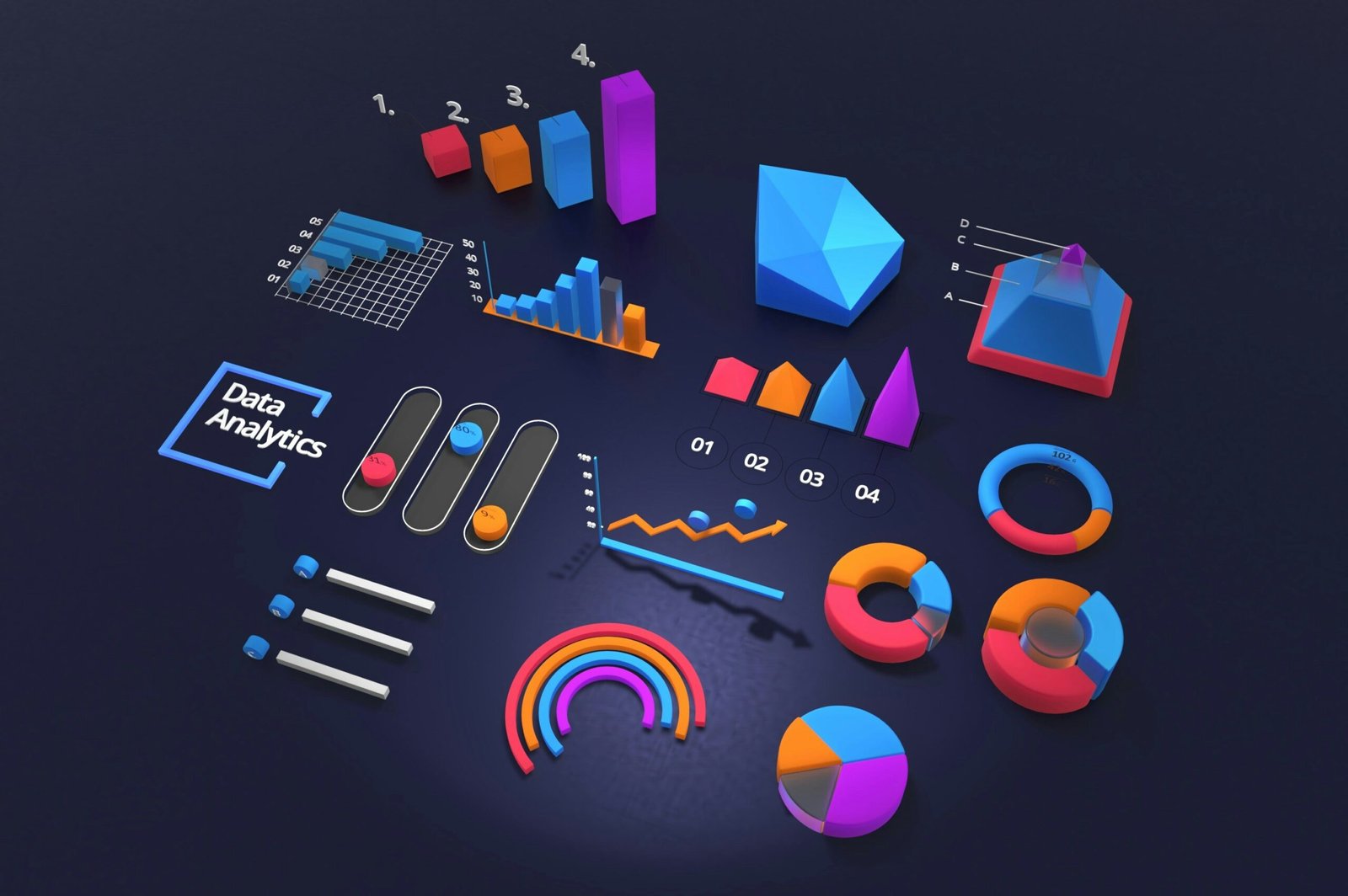Big Data in Education: Boosting Student Performance Through Data Analytics
 Photo by Choong Deng Xiang on Unsplash
Photo by Choong Deng Xiang on Unsplash Introduction to Big Data in Education
Big data has emerged as a transformative force across various sectors, and education is no exception. Big data in education encompasses massive volumes of information that, when analyzed, provide insightful trends and patterns crucial for decision-making. It involves collecting and processing data from multiple sources such as student records, learning management systems (LMS), and online learning platforms. The amalgamation of these data points results in actionable intelligence, capable of significantly enhancing educational outcomes.
In educational contexts, big data is derived from a multitude of interactions and activities. Student records encompass demographic details, academic performance, attendance, behavior assessments, and more. Learning Management Systems capture data related to course enrollments, assignment submissions, grades, and interaction logs. Additionally, online learning platforms, including Massive Open Online Courses (MOOCs) and other e-learning formats, contribute data on user engagement, learning preferences, completion rates, and peer interactions.
The relevance of big data in education lies in its potential to make the learning experience more efficient, personalized, and data-driven. For instance, by analyzing performance data, educators can identify at-risk students early and intervene promptly, thus preventing potential dropouts. Personalized learning paths can be created by understanding each student’s strengths and weaknesses, enabling tailored content delivery that maximizes individual performance. Moreover, the efficiency of administrative processes can be improved, from optimizing resource allocation to enhancing institutional management strategies.
The transformative impact of big data on education extends beyond individual students and educators. Policymakers and educational institutions benefit from broader insights, such as trends in student achievement, the effectiveness of curricula, and overall program success rates. With the integration of big data analytics, the education sector is moving towards a more data-centric approach, ensuring evidence-based practices that contribute to improved educational standards and outcomes.
Data Analytics: The Backbone of Modern Education
Data analytics is the process of examining large datasets to uncover hidden patterns, correlations, trends, and insights. In the context of education, data analytics serves as the backbone by converting raw data gathered from various sources into actionable intelligence. This transformed data empowers educators and administrators to make informed decisions aimed at improving student performance and overall educational outcomes.
There are four primary types of data analytics methods employed in educational settings: descriptive, diagnostic, predictive, and prescriptive analytics.
Descriptive Analytics helps in understanding what has happened in the past. It involves the use of historical data to identify trends and patterns in student performance, attendance, and engagement. Descriptive analytics tools often comprise dashboards and visualizations that provide a clear, concise overview of the data.
Diagnostic Analytics goes a step further by digging into the reasons behind certain outcomes. By analyzing various factors contributing to student performance, educators can pinpoint root causes of issues such as declining grades or low engagement. Diagnostic tools often involve statistical tests and analyses that help in understanding these underlying causes.
Predictive Analytics uses historical data along with complex algorithms to forecast future outcomes. For instance, by analyzing past performance, educators can predict which students are at risk of failing and intervene early. Predictive models also help in resource planning, ensuring that the necessary support materials and staff are in place to meet future educational demands.
Prescriptive Analytics takes predictive insights a step further by recommending actions to achieve desired outcomes. Through the integration of artificial intelligence and machine learning algorithms, prescriptive analytics provides actionable solutions that guide administrators in policy-making and strategy formulation.
Together, these data analytics methods form a comprehensive framework for understanding and enhancing student performance. They enable educational institutions to move from a reactive stance to a proactive, data-driven approach, ensuring that every student has the support they need to succeed.
Personalized Learning Experiences
In the realm of education, the integration of data analytics has ushered in significant advancements, particularly in the area of personalized learning experiences. By leveraging big data, educators can design tailored educational pathways that cater to the unique needs and preferences of individual students, thereby enhancing overall student performance.
One of the fundamental components of personalized learning is adaptive learning technology. These sophisticated systems utilize data analytics to conduct continuous assessments of student performance, learning paces, and comprehension levels. Based on this wealth of data, the technology adapts the difficulty of the content in real-time, ensuring that every student is consistently challenged at an appropriate level. For example, a student excelling in mathematics may receive more complex problems to solve, while a student struggling with the same material could be presented with additional practice and simplified explanations.
Personalized feedback mechanisms are another significant benefit of data analytics in education. Unlike traditional methods of assessment, which often provide delayed and generic feedback, data-driven approaches enable instant, personalized responses. These mechanisms can pinpoint specific areas where a student needs improvement, offering targeted resources and suggestions to bridge knowledge gaps. This timely feedback ensures that students can rectify errors promptly and solidify their understanding of various concepts.
Additionally, the customization of educational content extends beyond just academics. Data analytics facilitate the incorporation of diverse learning styles and preferences into the curriculum. For instance, visual learners might benefit from multimedia presentations, while kinesthetic learners could engage through interactive simulations and hands-on activities. By accommodating different learning preferences, educators can create an inclusive environment where each student has the best opportunity to succeed.
Overall, the personalization of educational pathways through data analytics not only promotes academic success but also fosters a more engaging and motivating learning environment. By addressing individual student needs, adaptive learning, and personalized feedback, educators can transform the educational experience, making it more effective and enjoyable for every learner.
Predictive Analytics and Student Performance
In the realm of education, predictive analytics has emerged as a potent tool to decipher and leverage student performance data. By utilizing sophisticated algorithms and statistical models, institutions can forecast future academic trends, identify students who may be at risk, and implement timely interventions to enhance student success.
Predictive models analyze historical data to generate patterns that are indicative of future performance. These models can detect early warning signs of students potentially struggling with their coursework. For instance, metrics such as attendance records, grades, and even engagement levels in online activities can be scrutinized to predict which students might face academic challenges.
This foresight enables educators to take a proactive approach. Interventions can be personalized and timely, providing the right support to students when they need it. Tailored tutoring programs, academic advising, and additional resources can more effectively address individual student needs, improving overall retention and graduation rates.
Several academic institutions have successfully harnessed predictive analytics to boost student outcomes. For example, Georgia State University implemented a predictive analytics system that tracks 800 different risk factors for each student. This system has significantly contributed to its increased graduation rates and reduced the time to degree completion by flagging issues early and providing actionable insights to advisors and students.
Another noteworthy instance is at Ivy Tech Community College in Indiana, where predictive analytics have been used to identify and support at-risk students effectively. As a result, the institution saw a remarkable increase in instant student retention rates. Advisors could target students who needed the most help and provide tailored support promptly, leading to a notable improvement in academic success.
The predictive power of data analytics is proving invaluable in educational environments. By foreseeing student performance trends and potential issues before they become problematic, institutions can foster a more supportive, efficient, and effective educational experience. Through the application of predictive analytics, the goal of enhancing student achievement and overall academic performance becomes increasingly attainable.
Data-Driven Decision Making in Education
Educational institutions increasingly harness the power of data analytics to guide strategic decision-making processes. Leveraging big data, schools and universities can make informed choices in vital areas such as curriculum development, resource allocation, faculty performance, and policy formation. By examining patterns and trends within extensive datasets, educational leaders are equipped to tailor curricula that better align with student needs and industry demands. For example, data analytics enables institutions to identify subjects where students frequently struggle and adjust teaching methodologies accordingly, fostering improved academic performance.
Resource allocation, another critical area, benefits immensely from data-driven insights. Schools can optimize the distribution of funds, technology, and educational materials by analyzing usage patterns and student performance metrics. This ensures that resources are directed towards areas that yield the highest impact on student success. Additionally, insights derived from data analytics inform effective faculty performance evaluations, promoting professional development and enhancing teaching quality. By objectively assessing instructional effectiveness, institutions can implement targeted training and support for educators, ultimately benefiting the student body.
Policy formation within educational institutions is also profoundly influenced by data analytics. Policies surrounding attendance, grading, and behavioral interventions are crafted based on comprehensive data analysis, ensuring that they are both practical and beneficial. For instance, predictive analytics can identify at-risk students, allowing for preemptive support through tailored interventions, thereby reducing dropout rates and enhancing overall student retention.
Practical examples highlight the profound impact of data-driven decision-making on student outcomes and institutional efficiency. A university employing learning analytics reported significant improvement in course completion rates after identifying and mitigating factors contributing to student attrition. Similarly, a school district utilizing predictive analytics to allocate resources more effectively saw a marked enhancement in standardized test scores. These cases underscore the role of data-driven strategies in fostering educational excellence and operational efficiency.
Challenges of Implementing Big Data in Education
Implementing big data analytics in the education sector presents a myriad of challenges that educational institutions must navigate with care. One of the primary concerns is data privacy. The collection and analysis of extensive data sets inevitably bring about issues related to the security and confidentiality of student information. Educational institutions must comply with legal frameworks such as FERPA in the United States, which mandates strict guidelines for handling student data.
Another significant challenge is the lack of data literacy among educators. Many educators and administrators do not possess the requisite skills to interpret and leverage big data effectively. This skills gap necessitates comprehensive training and professional development programs aimed at equipping educational professionals with the necessary competencies to utilize data analytics tools and interpret their results accurately. Only through such measures can the full potential of big data in boosting student performance be realized.
The financial implications of implementing big data solutions cannot be overlooked. The cost of analytics tools and technologies can be prohibitive, especially for institutions with limited budgets. Advanced data analytics platforms and software require substantial investment, in addition to the costs associated with training personnel and maintaining the technological infrastructure. Institutions must perform careful cost-benefit analyses to justify these investments and seek partnerships or grants that can alleviate some of the financial burdens.
Integrating data from disparate sources is another key challenge. Educational institutions collect data from a multitude of sources, including learning management systems, academic databases, and administrative records. The heterogeneity of these data sources can pose significant obstacles to effective data integration. To address this, institutions need robust data integration frameworks and tools that can seamlessly aggregate and harmonize data from diverse origins, ensuring that analytics insights are accurate and comprehensive.
To overcome these challenges, institutions must adopt a multi-faceted strategy. Establishing clear data governance policies, investing in educator training, securing adequate funding, and leveraging advanced data integration technologies are critical steps. By addressing data privacy concerns, enhancing data literacy, managing costs, and ensuring effective data integration, educational institutions can unlock the transformative power of big data analytics to enhance student performance.
Ethics and Privacy in Educational Data Analytics
As the utilization of big data in education grows, the ethical considerations and privacy implications surrounding the use of student data become ever more critical. One of the foremost concerns is data consent. It is imperative to ensure that students and their guardians are fully aware of how their data will be collected, stored, and utilized. Transparent communication regarding data consent procedures helps build trust and promotes the responsible use of data in educational settings.
Data security is another significant aspect where rigorous measures must be implemented to protect sensitive information from unauthorized access and potential breaches. Educational institutions need to adopt state-of-the-art security protocols, such as encryption and multi-factor authentication, to safeguard student data. Additionally, routine audits and vulnerability assessments are essential practices to identify and mitigate emerging security threats.
The ethical implications of data-driven decisions in education cannot be understated. Decisions based on analytics must be justifiable and aligned with an educational institution’s moral compass. There is a risk that excessive reliance on data could overshadow the human elements of teaching and learning, potentially leading to biased or prejudicial outcomes. Therefore, educators and administrators must strive to balance data insights with professional judgement to support equitable and fair educational opportunities for all students.
Best practices in maintaining student privacy involve adhering to regulatory frameworks such as the Family Educational Rights and Privacy Act (FERPA) and the General Data Protection Regulation (GDPR) where applicable. These regulations provide a standardized approach to data privacy, ensuring that student information is handled with the utmost care and accountability. Ensuring ethical use of data analytics in education also includes fostering a culture of continuous learning and adaptation among staff about data privacy and ethics.
Overall, the ethical and privacy considerations in educational data analytics are multifaceted and demand meticulous attention. By establishing transparent data consent processes, fortifying data security, carefully considering the ethical impact of data-driven decisions, and adhering to best practice regulations, educational institutions can leverage big data to enhance student performance while maintaining the trust and confidence of their communities.
Future Trends in Big Data and Education
As we traverse deeper into the 21st century, the integration of big data in education is poised for unprecedented advancements. One of the most significant emerging trends is the incorporation of artificial intelligence (AI). AI has the potential to revolutionize educational environments through adaptive learning systems that tailor educational content to individual student needs. By analyzing data on student performance, AI-powered platforms can provide personalized learning experiences and immediate feedback, thereby enhancing student engagement and retention.
Machine learning, a subset of AI, further amplifies the capabilities of big data in education. Machine learning algorithms can sift through vast amounts of data to identify patterns and predict student outcomes. For instance, predictive analytics can be employed to identify students at risk of falling behind and provide timely interventions. This proactive approach not only improves student performance but also contributes to higher graduation rates and better overall educational outcomes.
The Internet of Things (IoT) is another burgeoning trend that stands to reshape education through data analytics. IoT in education encompasses interconnected devices such as smartboards, wearable technology, and sensors that gather real-time data on various aspects of the learning environment. This data can be analyzed to optimize classroom settings, track student physical and mental well-being, and support interactive learning experiences. The convergence of IoT and big data offers educators invaluable insights into the learning process and helps in creating a more conducive educational ecosystem.
Looking ahead, these technologies will continue to evolve, driving further enhancements in big data analytics in education. The integration of advanced algorithms, real-time data processing, and sophisticated analytics tools will enable more precise and efficient educational strategies. Institutions that embrace these advancements will be better equipped to foster academic excellence and prepare students for the demands of a data-driven world. The future of education, empowered by big data, is indeed promising and bound for continuous transformation.



Tidak ada komentar